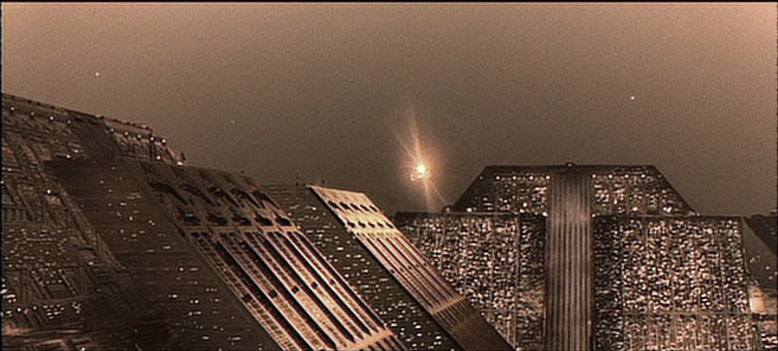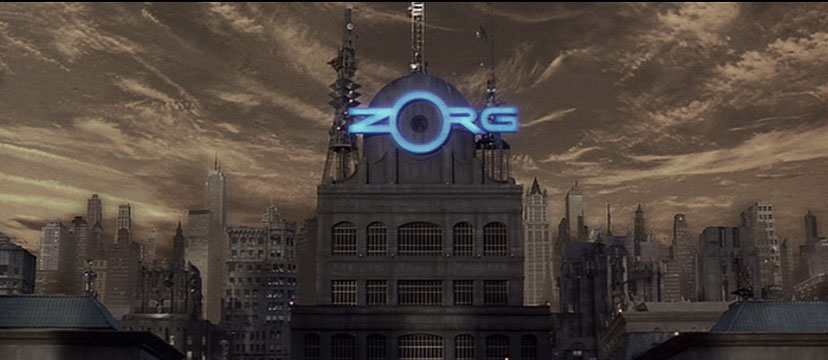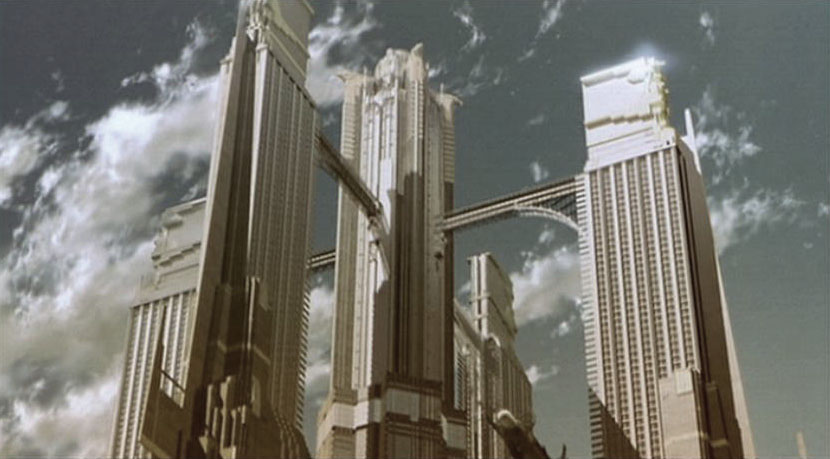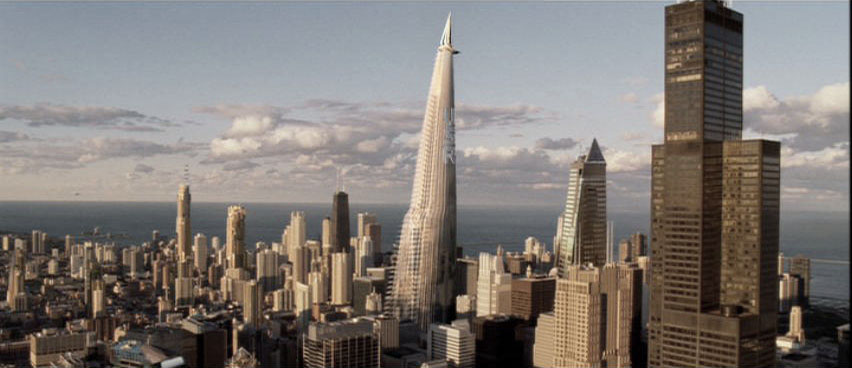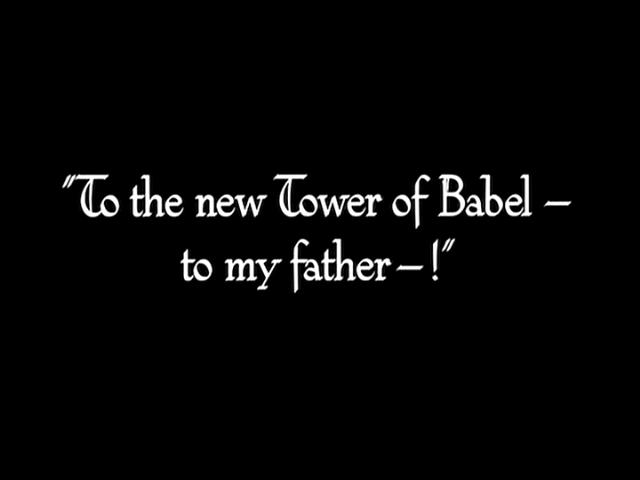
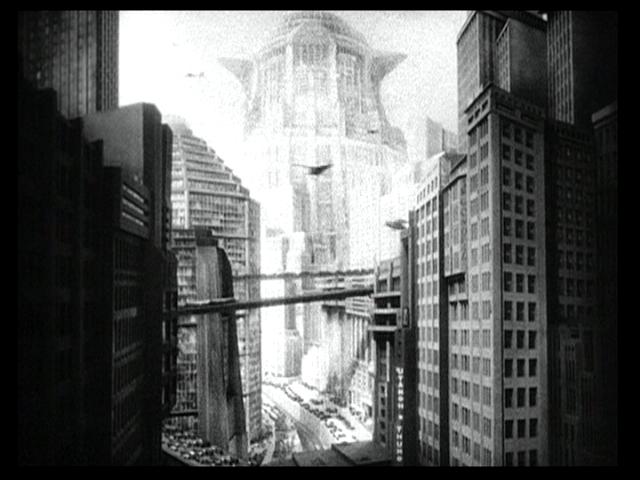
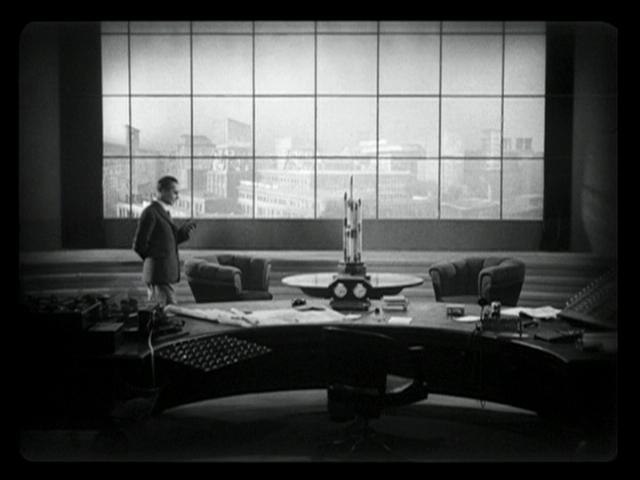
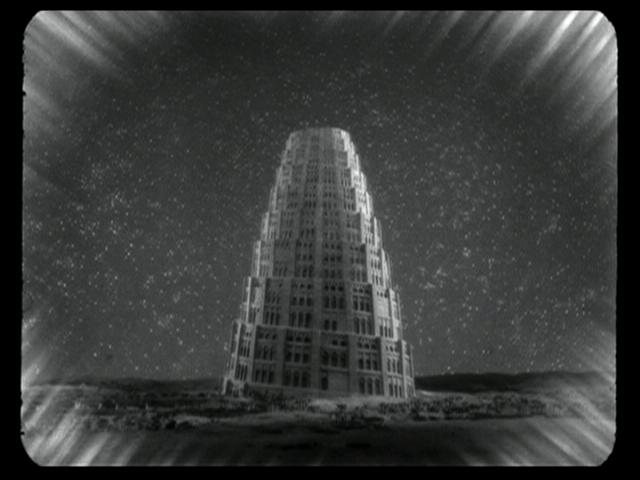
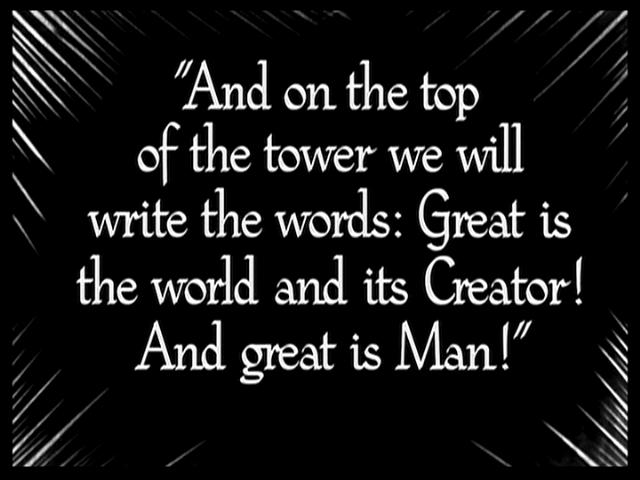
Metropolis, another German film by Fritz Lang, followed Wilelm's Murnau. This film also utilized oversized billboards with the impressive perspective of skyscrapers. To have a full apprecation for Lang's 1927 film a historically perspective is helpful. At the time the film was produced Germany was at the mid point between World War I and World War II. Germany's future looked bleak, at the time manufacturing was the principal economy, inflation was out of control coupled and the National Socialist party was gaining prominence. The disparity between the wealthy and the common citizen was enormous and continuing to widen. Lang's Metropolis film like Wilhelm addresses these social issues and others such unrest, generational conflict, technology, and religious doubt; but unlike Wilhelm's film that addresses these issues in the plot, Lang's Metropolis physically manifests them in a compelling and rich set design unlike anything seen before. The result was a powerful architectural metropolis that represents what Germany could become. The sets where inspired by Lang's trip New York City in 1924, he describes his experience:
"The view of New York by night is a beacon of beauty, strong enough to be the center piece of a film... Streets full of moving, turning spiraling lights, and high above the cars and elevated trains, skyscrapers or blue and gold, white and purple and still higher above there are advertisements surpassing the stars with there light." (Neumann 34)
The city he creates is a city based on his experiences, Lang attempts to create a city of beauty; towers reaching towards the sky, heavily detailed Chicago style, the city itself was an expression of human ingenuity and modern technology. Located centrally in Lang's cityscape is a monumental tower, modeled on the Pieter Bruegels 1563 painting of The Tower of Babel. But unlike traditional European cities that are dominated by church towers this city more resembles the American city, whose skylines are dominated by towering temples of work.
The central tower of Metropolis is the city's nucleus, over powering the rest of the city by its sheer size, it overshadows everything beneath it. The upper most reaches of the tower holds the office of capitalistic ruler Joh Frederson, which offers a magnificent panoramic view of the city he created. Playing on the audience's fears and ambiguous attitude towards the city, Lang created a city that was literally a man-eating monster. Metaphorically, the city is sucking the country's resources dry. The idea of the city as a living being is forceful, there is one particular scene that reinforces the imagery of the resource draining monster, as seen when Frederson's son confronts his father,
"Your great glorious, dreadful city of Metropolis roars out, proclaiming she is hungry for fresh human marrow and human brain and then the living food rolls on, live steam, into the machines room, which are like temples." (Metropolis, 1927)
The son's words articulate what the viewer already knows, it is the shot itself that is more compelling then the words spoken. Taken from the vantage point behind Frederson's desk, there are windows in front, over looking the city below. Like God, Frederson the creator over looks his creation.
Frederson's city is one of oppression and exploitation, where the elite are privileged to have access to the sun and fresh air while the majority of the population serve as the working class below ground. This vision of a technology dependent segregated society is based on the industrialization of Lang's homeland. Lang was also familiar with Antonio Sate' Elias work and that of other futurist architects of the early 1900's. The architecture of this film is a rendering of what could be given the conditions of Germany at the time when this movie was created. In 1914 Marinetti, a futuristic theorist wrote, La Splendeur Géométrique et Mécanique, in this work he describes the 'beauty' of industrialism,
"Nothing in the world is more beautiful that a great humming power station, holding back the hydraulic pressure of a whole mountain range, and the electric power for a whole landscape, synthesized in control panels bristling with levers gleaming " (Frampton 86)
Lang's Metropolis gives form to the ideas of futurism, creating monumental landmarks that are symbols of the futurist school of thought, this architecture although monumental in scale does not represent the ideals of a collective conscious, as Keger say it should, rather it is the ideal of the elite few who will have the opportunity to prosper at the expense of their country men.
The symbolic architectural expressionism of Lang's Metropolis far surpasses any thing seen before, 'like contraband, it has crosses the borders of the consciousness without being questioned...' (Kracauer) Metropolis has the uncanny ability to transcend the audience's naïve enthusiasm for skyscrapers and play on their fears of the city and the raising power of the National Socialist party. Further the use of architecture as a metaphor changed the way future films approach set design, as described by film critic Luis Bunuel following Metropolis Spanish premier, "now and forever the architect will replace the set designer. Film will be the faithful translator of the architect's boldest dreams." (Neumann 98) The fascination with skyscrapers has not ebbed, and still lingers in the imagination of filmmakers and audiences.

